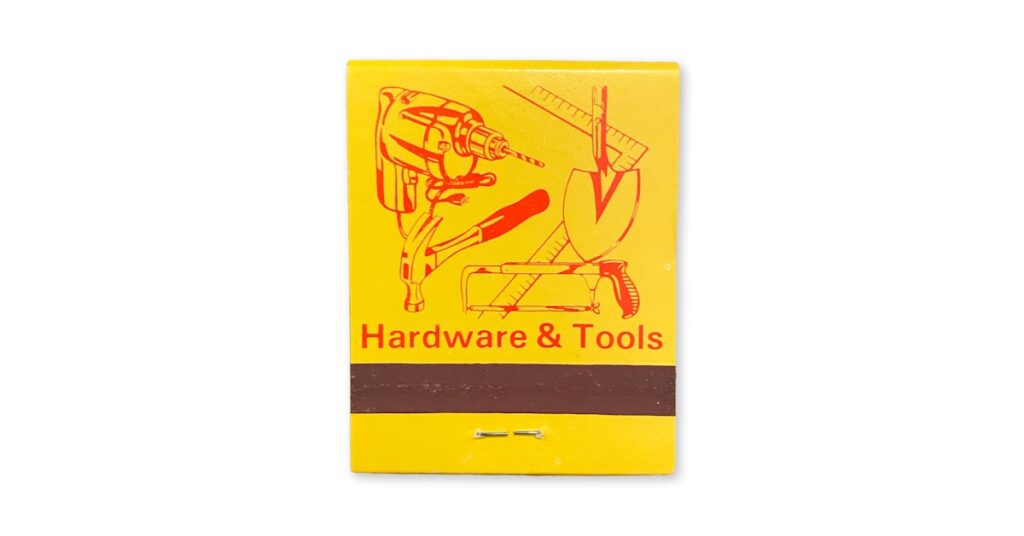Are your Azure costs spiraling out of control?
You have fragmented monitoring across services, creating blind spots that make it nearly impossible to track where your budget is actually going.
This lack of unified visibility means you’re likely wasting money on idle or over-provisioned resources without even knowing it, all while facing pressure to cut costs.
According to Gartner, 70% of enterprises exceed their cloud budgets due to poor resource management and cost visibility. This shows just how common this challenge is.
The right toolset can fix this by providing centralized monitoring and automated cost controls, giving you back command over your Azure environment.
While we’re discussing unified monitoring, you might also find my guide on best observability tools helpful for deeper insights.
In this guide, I’ll show you the best azure management tools for 2025. These solutions will help you unify monitoring and get your spending under control.
You’ll discover how to get actionable insights that reduce waste and improve efficiency, without disrupting your existing DevOps workflows.
Let’s get started.
Quick Summary:
| # | Software | Rating | Best For |
|---|---|---|---|
| 1 | Flexera → | Large hybrid enterprises | |
| 2 | CloudZero → | Mid-market cloud engineering | |
| 3 | Harness → | Enterprise cloud architects | |
| 4 | ManageEngine → | Enterprise IT directors | |
| 5 | New Relic → | Mid-market & enterprise teams |
1. Flexera
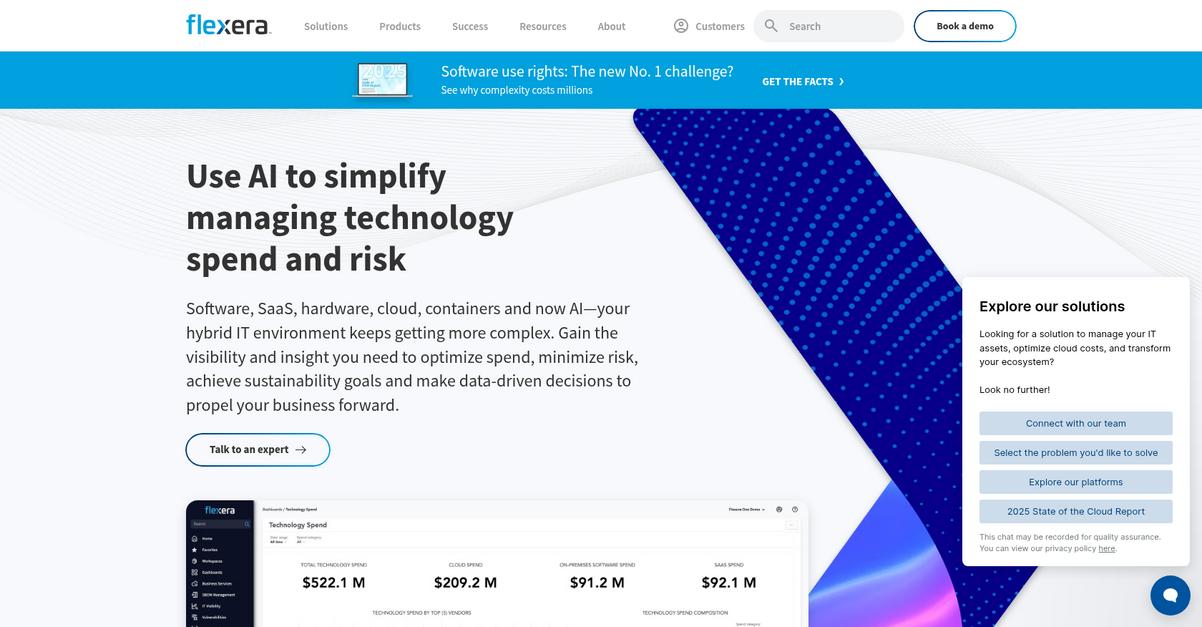
Are fragmented Azure costs and monitoring hurting your operations?
Flexera unifies IT asset management (ITAM) and FinOps, giving you a complete picture of your hybrid IT estate.
This helps you gain visibility and actionable insights across cloud, SaaS, and containers, enabling you to optimize spend and minimize risk.
Here’s how to gain control.
Flexera tackles your cost management blind spots head-on. Their platform provides comprehensive cloud cost governance, including automated spend approvals and FinOps best practices.
It helps you identify unknown, vulnerable, or obsolete assets, proactively managing software vulnerability and obsolescence risks. This means you can address tech debt and boost security. Additionally, Flexera shines a light on shadow IT across all applications, reducing wasted investments and increasing the success rate of initiatives like cloud migration.
Plus, Flexera’s FinOps capabilities allow you to visualize and allocate cloud usage and billing efficiently across your private and public cloud environments, optimizing operations at scale.
Gain maximum value.
Before diving deeper, you might find my analysis of enterprise legal management software helpful for gaining financial control and mitigating risks.
Key features:
- Unified ITAM and FinOps: Get complete visibility and actionable insights across your hybrid IT environment, including cloud, SaaS, and containers to optimize spend.
- Automated Cloud Cost Governance: Manage, optimize, and scale your cloud environment responsibly with automated spend approvals and adherence to FinOps best practices.
- Shadow IT Identification: Shine a light on hidden software and SaaS usage, helping you reduce operational expenses and mitigate compliance or security risks.
Learn more about Flexera features, pricing, & alternatives →
Verdict:
Flexera is an excellent choice for best Azure management tools due to its unified ITAM and FinOps capabilities, offering automated governance and insights into spend. Its ability to identify shadow IT and provide comprehensive cloud cost optimization truly sets it apart, helping you avoid unbudgeted expenses and achieve significant savings.
2. CloudZero
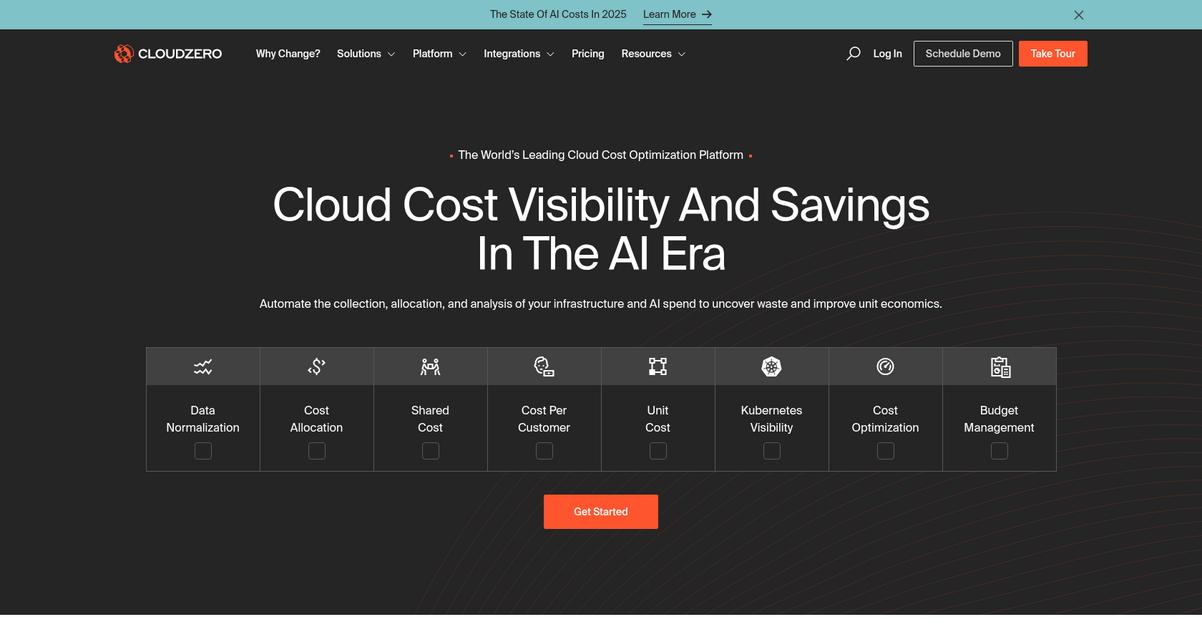
Are you tired of fragmented cloud cost insights?
CloudZero provides cloud cost visibility and savings through automated collection, allocation, and analysis of your infrastructure and AI spend. This means you can easily uncover waste and improve your unit economics.
It helps you overcome struggles with fragmented monitoring and cost management blind spots. CloudZero ensures perfect allocation without perfect tags, allowing you to focus on delivering value.
This changes everything.
CloudZero addresses common pain points like unifying fragmented monitoring across services. The AnyCost™ API and common data model let you analyze any cloud spend immediately, including Azure, Kubernetes, and Databricks.
Additionally, its AI-driven anomaly detection automatically compares hourly spend data, notifying relevant engineers during abnormal spend events. This puts engineers at the center of cloud savings, helping them build cost-efficient software. Plus, CloudZero’s FinOps Account Managers provide ongoing consultation to find savings opportunities and achieve elite spend allocation. The result is transparent cost allocation and improved incident resolution times.
This is true financial control and predictability.
Key features:
- AnyCost™ API & Data Normalization: Unify and analyze spend from any IaaS, PaaS, or SaaS provider, including Azure, in a single pane of glass.
- CostFormation® & Allocation: Automate 100% of cost allocation, even shared costs, without perfect tagging, eliminating cost blind spots and ensuring accuracy.
- AI-Powered Anomaly Detection & Insights: Proactively identify and alert engineers to unexpected spend spikes, enabling quick investigation and human-identified savings opportunities.
Learn more about CloudZero features, pricing, & alternatives →
Verdict: CloudZero fundamentally shifts how you manage and communicate cloud economics, helping organizations like Skyscanner find enough savings to pay for a year’s license within two weeks. Its unified view, precise cost allocation (including for Kubernetes), and AI-driven insights make it one of the best azure management tools for achieving financial control and optimizing cloud spend.
3. Harness
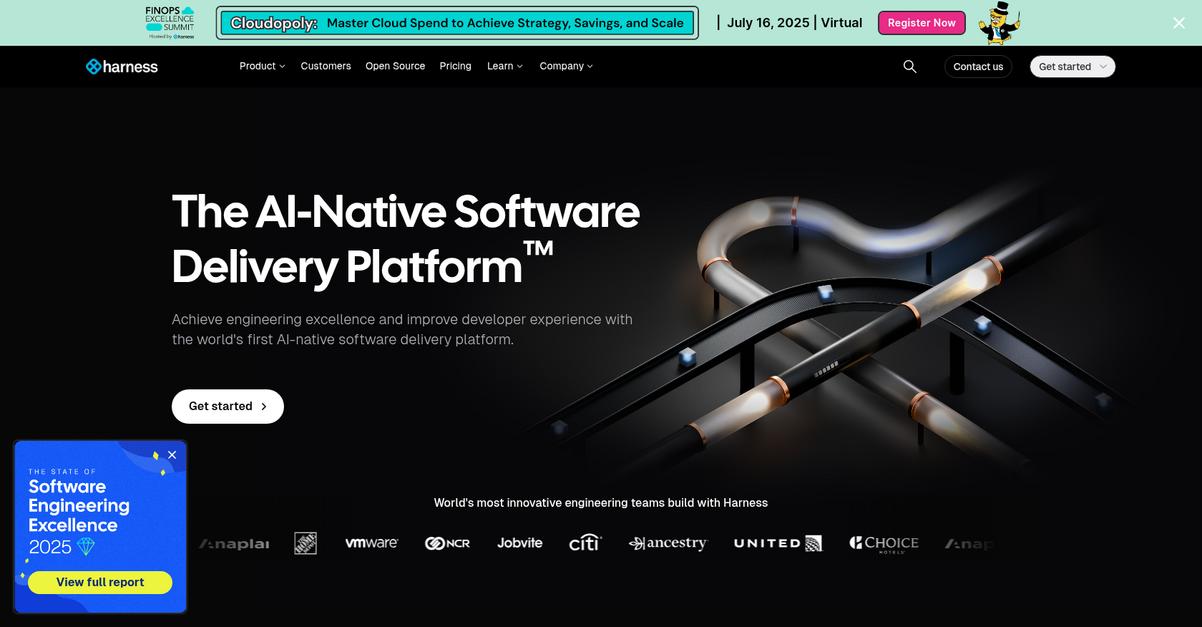
Struggling with fragmented Azure monitoring and runaway costs?
Harness can help you achieve engineering excellence and improve developer experience. This means automating pipelines and gaining unified visibility.
You can also accelerate onboarding and build velocity while eliminating bottlenecks. The result? A seamless environment where innovation thrives.
Here’s how Harness simplifies cloud operations.
It tackles complex challenges by providing a unified platform for software delivery. You’ll find features like Continuous Delivery & GitOps, enabling automated deployments across multi-cloud and multi-service environments. Plus, with Cloud Cost Management, you can continuously optimize cloud spend by enforcing policies, reducing up to 70% of unnecessary expenditures.
Additionally, Harness includes AI Test Automation, allowing you to modernize end-to-end tests with AI-powered authoring and self-healing capabilities, accelerating development with intelligent code suggestions and explanations. Furthermore, its Incident Response module uses AI-driven triage and contextual insights for faster resolution, improving reliability and reducing downtime.
Ultimately, you get transparent cost allocation.
While we’re discussing cost optimization, understanding wireless expense management solutions is equally important for comprehensive financial control.
Key features:
- Cloud Cost Management: Continuously optimize your Azure spend by enforcing cloud cost policies and compliance at scale, potentially reducing costs by up to 70%.
- Continuous Delivery & GitOps: Fully automate your deployment pipelines for multi-cloud, multi-region, and multi-service software deployments, accelerating innovation velocity.
- Harness AI: Leverage multi-agent AI features to improve all aspects of software delivery, from code generation to simplified pipeline management and troubleshooting.
Learn more about Harness features, pricing, & alternatives →
Verdict: Harness offers robust features for centralized monitoring, automated cost optimization, and seamless CI/CD integration, making it one of the best Azure management tools for enterprise cloud architects.
4. ManageEngine
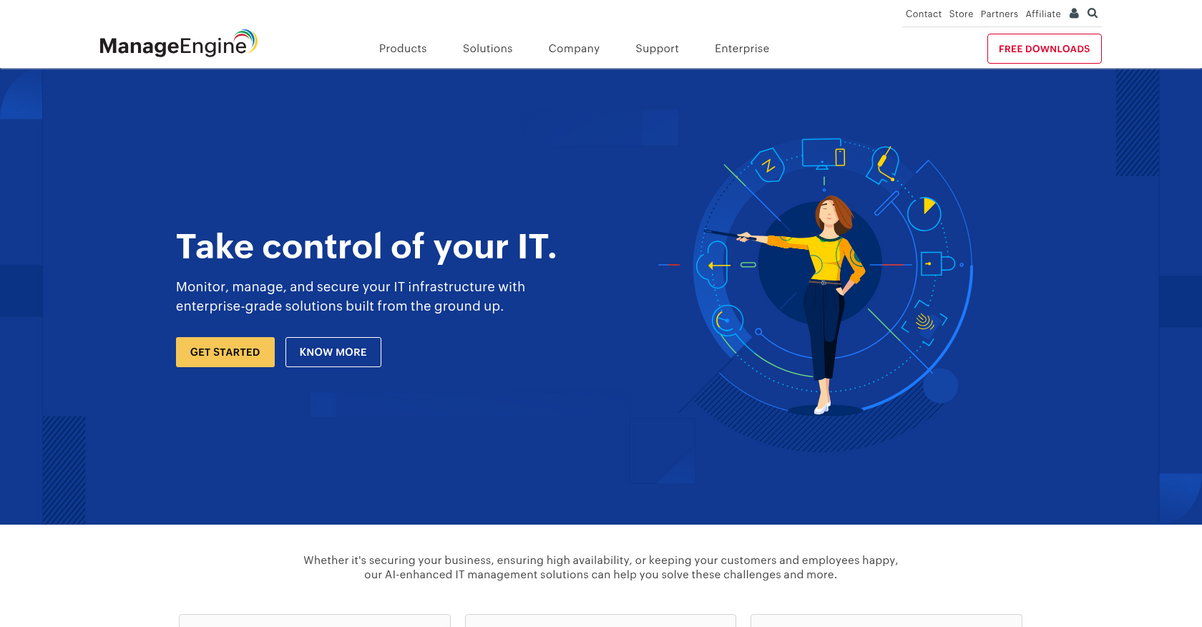
Fragmented monitoring making your Azure management a nightmare?
ManageEngine provides unified solutions to monitor, manage, and secure your IT infrastructure, including powerful AI-enhanced capabilities. This means you can gain control over your entire IT environment.
This comprehensive approach helps you address common pain points like scattered visibility and lack of automation, providing you with actionable insights into IT operations. The result is a more cohesive and efficient management experience.
Ready to take control of your IT?
ManageEngine helps you solve these challenges by offering enterprise-grade solutions for IT operations management and observability, specifically designed to monitor your network, servers, and applications. This allows for centralized monitoring of Azure resources.
With features like AIOps and Unified IT Analytics, ManageEngine empowers you to visualize IT data and gain actionable insights. You can effectively manage and secure your digital identities, privileged access, and even unify endpoint management across various devices. Plus, it aids in securing your network from cyberattacks and ensuring compliance through security information and event management.
Additionally, ManageEngine’s cloud solutions support multi-cloud and hybrid infrastructures, ensuring scalability for your enterprise IT. This comprehensive suite helps achieve transparent cost allocation and optimize spend by identifying idle resources.
Ultimately, this means better control over your Azure environment.
Key features:
- IT Operations Management & Observability: Monitor and manage your network, servers, and applications for comprehensive visibility and control across your IT infrastructure.
- Advanced IT Analytics: Visualize IT data and gain AI-powered, actionable insights, correlating IT data for informed decision-making and capacity planning.
- Security Information & Event Management: Secure your network from cyberattacks, manage logs, conduct security auditing, and ensure compliance with robust threat detection and response.
Learn more about ManageEngine features, pricing, & alternatives →
Verdict:
ManageEngine’s integrated suite addresses core challenges for cloud architects and IT directors seeking the best Azure management tools. Its AI-enhanced IT operations management and advanced analytics provide unified monitoring and actionable insights, supporting cost optimization and compliance, while ensuring scalability for your enterprise.
5. New Relic
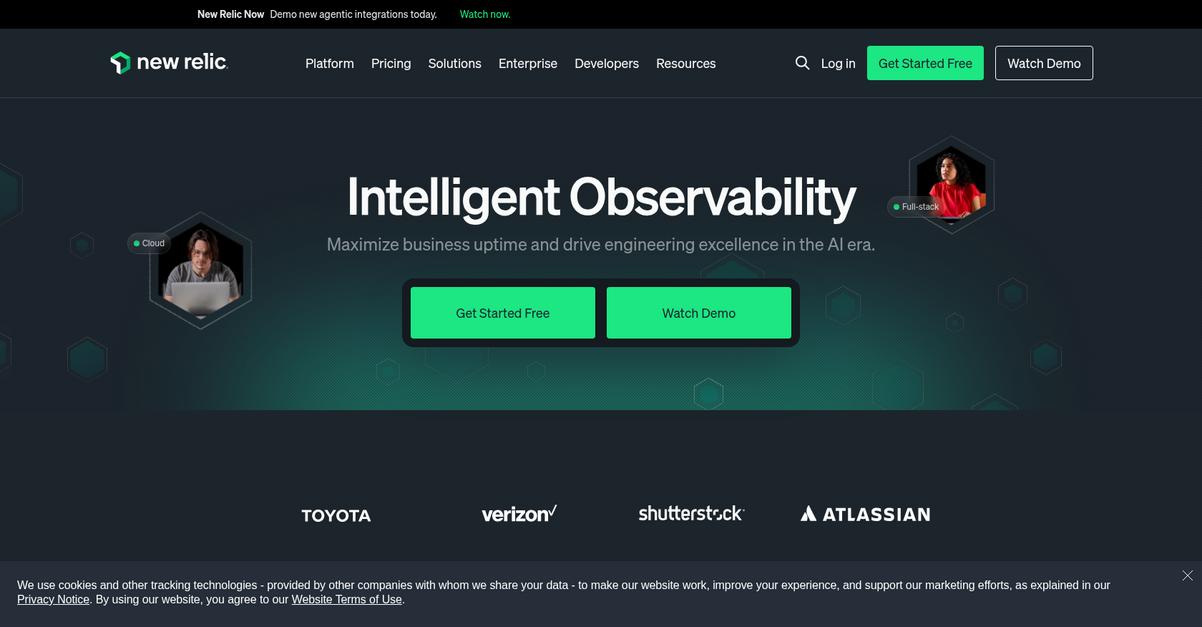
Struggling with fragmented Azure monitoring and runaway costs?
New Relic offers a powerful solution for intelligent observability, helping you unify monitoring and optimize your cloud spend. This means you can resolve issues up to 5x faster.
Their platform provides Cloud Cost Intelligence to help you gain control over your Azure expenditures, identifying areas for optimization and helping you achieve better ROI. You can track actual usage, not just peak, avoiding overages.
Here’s how it helps.
New Relic provides full-stack monitoring, covering everything from your front-end and back-end to infrastructure and logs. This enables you to get a complete, unified view of your Azure environment.
You can monitor specific services like Azure Cloud Monitoring, Kubernetes, and Serverless functions, giving you deep visibility into your cloud resources. This comprehensive approach reduces blind spots and simplifies troubleshooting. Additionally, their platform includes capabilities like Alerts, Anomalies detection, and Dashboards, allowing your team to proactively identify and address performance bottlenecks and cost inefficiencies. It helps tear down silos, bringing your engineering teams closer together.
Unlock unified monitoring and optimize your cloud costs.
If you’re also looking into comprehensive management solutions, my article on best complaint management system offers valuable insights.
Key features:
- Full-stack observability: Monitor your entire Azure environment, including front-end, back-end, infrastructure, and logs, for a comprehensive overview.
- Cloud Cost Intelligence: Gain precise visibility into your Azure spend, identify idle resources, and optimize costs based on actual usage, not just peak.
- Intelligent transaction observability: Resolve issues up to 5x faster by focusing on the data and stack that matter most, ensuring maximum business uptime.
Learn more about New Relic features, pricing, & alternatives →
Verdict:
New Relic delivers a robust, integrated platform for Azure management, addressing fragmented monitoring and cost blind spots directly. With capabilities like Cloud Cost Intelligence and full-stack observability, it helps mid-market and enterprise teams unify their monitoring and optimize Azure spend, making it one of the best Azure management tools for achieving operational efficiency.
6. AppDynamics
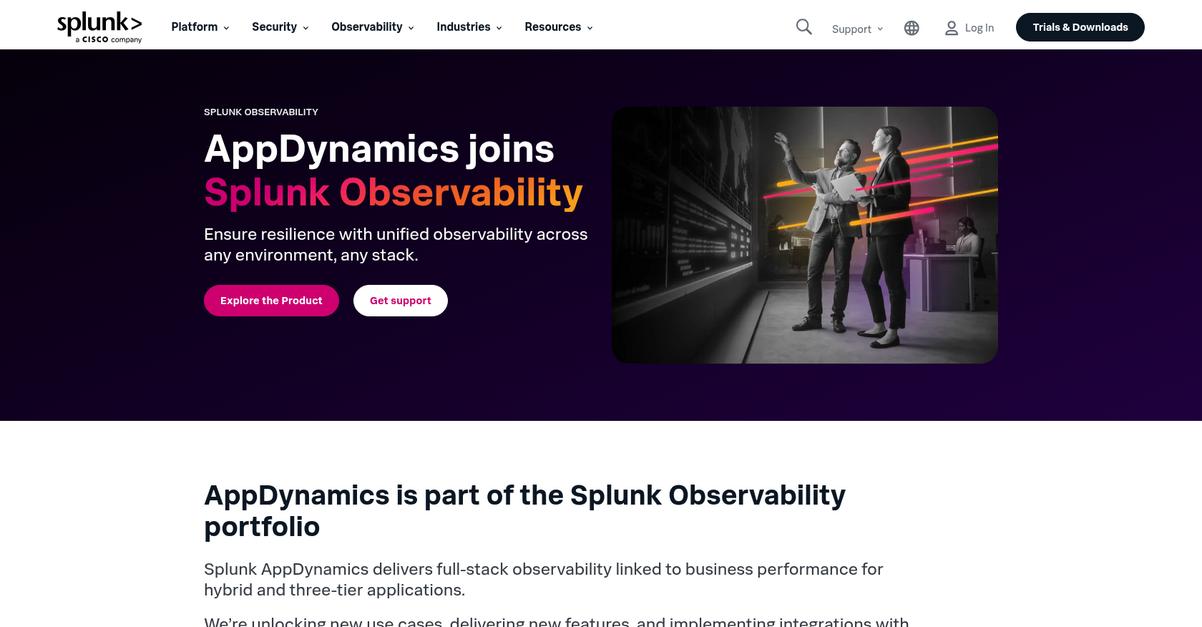
Struggling with fragmented monitoring across your Azure services?
AppDynamics provides full-stack observability, gaining unified visibility to detect and resolve performance issues quickly.
This means you can see how problems anywhere impact your business to prevent lost revenue and customer dissatisfaction.
Here’s how to unify your monitoring.
AppDynamics, now part of Splunk Observability, helps you deliver peak performance for hybrid and three-tier applications. It offers unique capabilities like application performance monitoring linked to business metrics. You can also get application security linked to business risk, monitoring for SAP® Solutions, and digital experience monitoring. Additionally, it helps you debug problems in microservices and optimize your web and mobile experience.
AppDynamics expands observability for hybrid and on-prem applications, ensuring your ITOps, Engineering, Network, and Security teams see across traditional and modern apps, on-prem, private, and public cloud domains, and both owned and unowned networks. This comprehensive view helps you detect and investigate issues sooner, proactively, so you spend less time in war rooms.
The result is better control over your data and costs.
Before diving deeper, if you’re also streamlining operations, my analysis of resource scheduling software might be helpful.
Key features:
- Full-stack observability: Gain unified visibility to detect, diagnose, and resolve performance issues across hybrid and three-tier applications, linked to business performance.
- Application security & monitoring: Offers application security linked to business risk, alongside specialized monitoring for SAP® Solutions and comprehensive digital experience monitoring.
- AI-powered troubleshooting: Utilizes AI to accelerate troubleshooting and resolution across teams, consolidating alerts and events to reduce noise with AIOps capabilities.
Learn more about AppDynamics features, pricing, & alternatives →
Verdict:
AppDynamics excels at providing full-stack observability for hybrid and on-prem applications, enabling IT directors to optimize performance and reduce alert noise. Its strong emphasis on business metrics and AI-powered troubleshooting makes it one of the best azure management tools for unified monitoring.
7. Turbo360
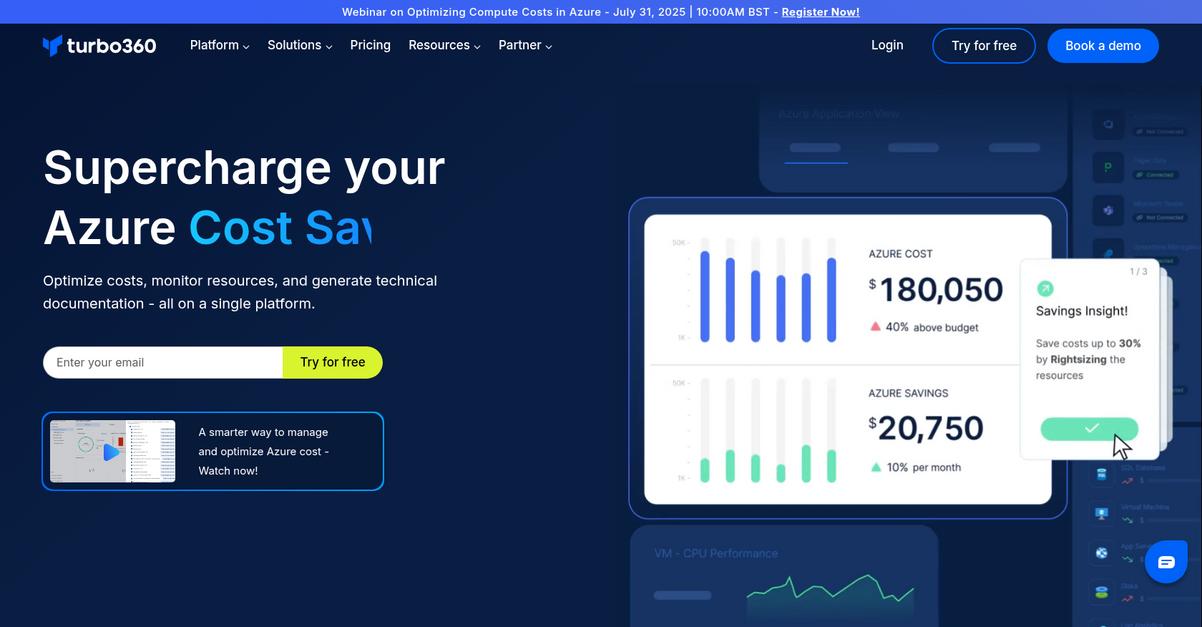
Struggling with fragmented Azure monitoring and runaway costs?
Turbo360 provides unified visibility and automation, tackling your cost management blind spots. This means you can gain detailed cost visibility and proactively address unusual spending by swiftly identifying cost anomalies, preventing wasted investments. You’ll easily attribute costs hierarchically for clear show-back policies.
This makes a smarter way to manage and optimize Azure costs.
Turbo360 solves these issues by offering comprehensive Azure Cost Management with features like cost analysis, anomaly detection, and optimization insights. You also get unified Azure Monitoring, including business mapping and holistic monitoring for faster issue resolution. The platform enables automatic remediation for proactive problem prevention.
Additionally, Business Activity Monitoring minimizes business message failures, empowering your stakeholders with self-serve tracking for critical data. This helps you get instant answers to business-critical queries like “Where is order #374?”, freeing up your IT team significantly.
Unlock significant Azure savings and improved efficiency now.
Before diving deeper, you might find my analysis of best cloud computing platforms helpful.
Key features:
- Azure Cost Management: Provides granular visibility into your Azure costs, allowing you to attribute expenses, detect anomalies, and uncover hidden savings through targeted recommendations.
- Unified Azure Monitoring: Offers holistic monitoring with business mapping and automatic remediation, helping you proactively prevent issues and achieve faster resolution times for your team.
- Business Activity Monitoring: Empowers business users with self-serve end-to-end tracking of critical business data flows, minimizing message failures and freeing up IT support.
Learn more about Turbo360 features, pricing, & alternatives →
Verdict:
Turbo360 is an excellent choice for the best azure management tools, providing unified cost visibility and automated optimization. It empowers your team with anomaly detection, holistic monitoring, and business activity tracking, delivering measurable ROI by helping you uncover significant savings, like the $1 million for one customer.
Conclusion
Azure costs still feel uncontrollable?
I know the struggle. You have blind spots in your spending, and monitoring is scattered across so many services, making it impossible to manage effectively.
PwC research shows that companies implementing AI-driven tools reduce Azure spend by 30-40% through automated right-sizing. That’s a massive saving on your budget just by gaining a unified view of resources.
So, what’s the best choice here?
For additional insights, my analysis of Cloud Contact Center Solutions provides valuable perspectives on improving customer service.
From everything I’ve reviewed, Flexera is my top recommendation. It uniquely unifies IT asset management and FinOps to give you a complete, actionable picture.
I was impressed by its ability to automate cost governance and shine a light on shadow IT. Choosing one of the best azure management tools like this gives you back real control.
I suggest you visit Flexera to request a demo and see how it provides comprehensive visibility across your entire hybrid cloud environment.
You’ll finally get your budget under control.
